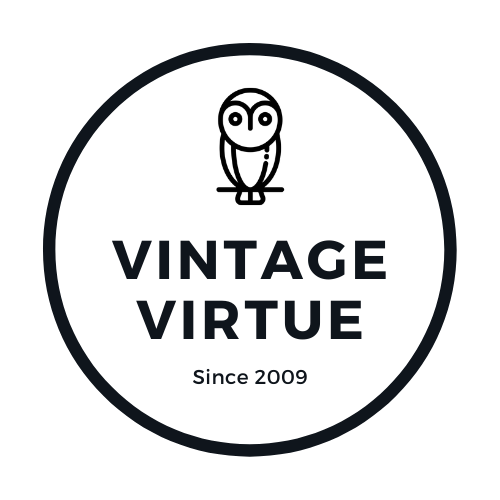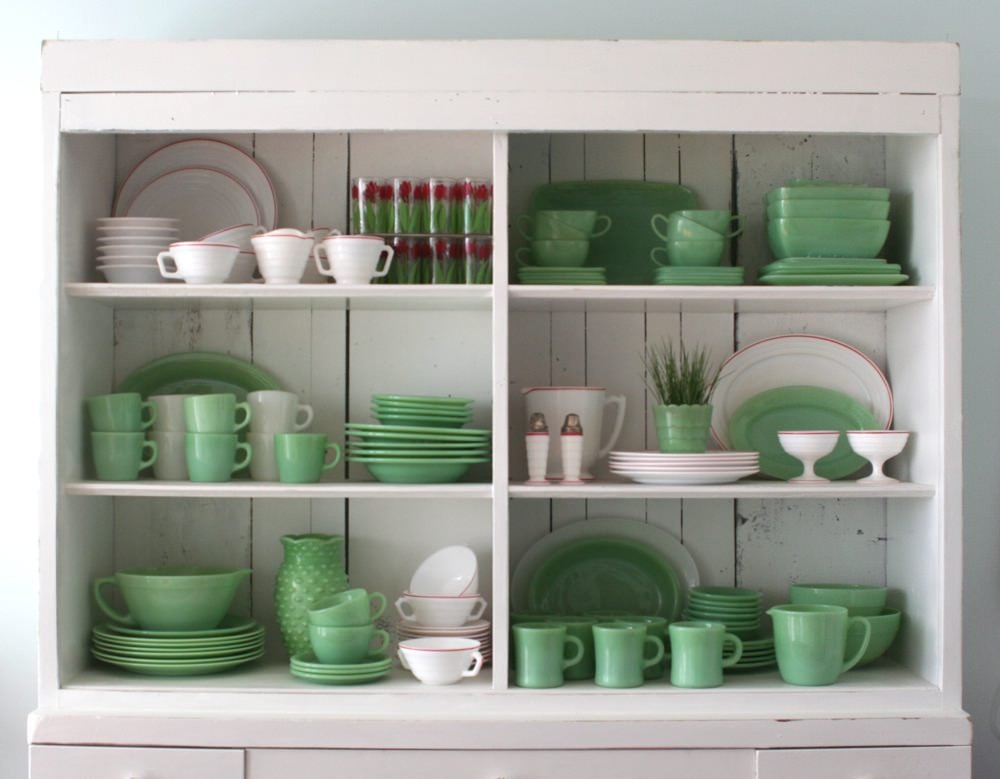Fire King By Anchor Hocking - A Beginners Guide To Collecting
Anchor Hocking Glass Corporation began as the Hocking Glass Company of Lancaster, Ohio. The company was founded in 1905 near the Hocking River, for which it’s named; the pressed-glass company prospered until 1937, when it merged with the Anchor Cap and Closure Corporation of Long Island City, New York. The company is best known for its Fire-King glass, manufactured from about 1940 until 1976. Fire King quickly gained popularity due to its durability, versatility, and attractive designs. Fire-King products are known for their resistance to thermal shock, meaning they can go directly from the freezer or refrigerator to the oven without shattering. This quality made them a favorite choice for cooking, baking, and serving meals. The brand was also used on various patterns and colors of dinnerware, mixing bowls, and coffee mugs.
The best-known Fire King patterns include Jane Ray, Hobnail, Early American Prescut, and Rainbow; Rainbow appears to have been the company’s response to Fiestaware. Philbe is one of the rarest patterns since it was only produced in 1937 and 1938; the transparent blue is the most prized of the four colors in the line.
Anchor Hocking also made Fire-King for restaurants and institutions, such as schools and the U.S. military, from 1948 until 1967. Fire King Restaurant Ware was manufactured in various functional pieces, including plates, bowls, mugs, cups, saucers, serving platters, and more. The designs were often simple and practical, with minimal decorative elements, focusing on functionality and durability instead. These pieces were stackable, easy to clean, and withstand temperature fluctuations, making them ideal for commercial kitchens and busy dining establishments.
The primary characteristic of Fire King Restaurant Ware is its distinctive color, known as "Jade-ite" or "Jadite." Jade-ite is a pale green opaque glass that became highly popular during the Great Depression era due to its resemblance to genuine jade. The soft green hue of the glass was considered soothing and pleasant, making it appealing for use in restaurants and homes alike.
Collecting Fire King
Over the years, Fire King has gained significant popularity among collectors of vintage glassware. The nostalgic charm and its historical significance in American dining culture contribute to its appeal. Collectors often seek out complete sets or rare pieces to add to their collections.
Fire-King is affordable both because there is a plentiful supply and because it’s durable. It was produced around the clock for decades, so it can easily be found at estate and yard sales, as well as at auctions and online. The Restaurant Ware is also quite popular and available in both the Jadeite and white versions, white being more valuable since less of it was produced.
Various advertising pieces, especially mugs, are readily available in the Fire-King brand. McDonald’s “Good Morning” stacking mugs which were initially given away with a breakfast purchase in 1976, can be found for less than $5 apiece. On the other hand, the D-handled “Burger Queen” mug can cost as much as $40 or $50. Many advertising mugs for local businesses are plentiful and can be found online for between $5 and $10.
Condition
Due to the millions of pieces of Fire-King in circulation, the condition is critical when collecting. It is important to carefully check the condition of each piece of opaque glass since cracks and flaws are more challenging to spot than on clear glassware. If you are shopping in person, a good tip is to run your thumbnail around all edges to feel for chips and flea bites. If you are buying over the Internet, ask the seller as many questions about the condition as possible. A chipped mug, for example, virtually destroys the value entirely; the only value in one chipped is if it is rare and needed to start or complete a set.
When searching for this type of glass, be mindful of any scratches on the inside surfaces and aim to only buy flawless pieces. Fire King is durable, but it cannot endure abuse such as scrubbing with metal scourers or being used as a flowerpot.
Manufacturing flaws, such as minor roughness around mold lines, mold marks, dark specks found under the glaze, and ripples, are common and shouldn't affect the value since Fire-King glassware, at its best, was always imperfect glassware.
Tips For Beginner Collectors
Buy the things you like and buy in excellent condition.
Beginners should focus on collecting everyday items to get a feel for the distinct characteristics.
Gain experience spotting cracks and flaws in authentic vintage Fire-King and distinguishing what flaws came from the factory.
Watch Out For Fakes
Unfortunately, the growing collector interest in Fire King has created an equally growing market of fakes, reproductions, and fantasy pieces. Contemporary productions from Asia and Brazil are abundant in the marketplace; pieces marked “Fire-King Made in Japan” are new. Before buying, ensure you are educated on shapes, sizes, patterns, and details. Take accurate measurements and compare them to trustworthy references to ensure the item you are interested in is genuine. If the measurements don’t match, the piece may be a reproduction.
Authentic mugs have painted designs that are then fired on. Newer fakes and reproductions have a different, “softer” finish. Some fakes are made by placing a super-sticky appliqué on a blank Fire-King mug. One example collectors should be aware of is the Disney Jiminy Cricket mug that is being reproduced with old Fire-King stock. Other Disney mugs that have come onto the market are made with vinyl stick-on logos; this is not authentic to the Fire King manufacturing process.




